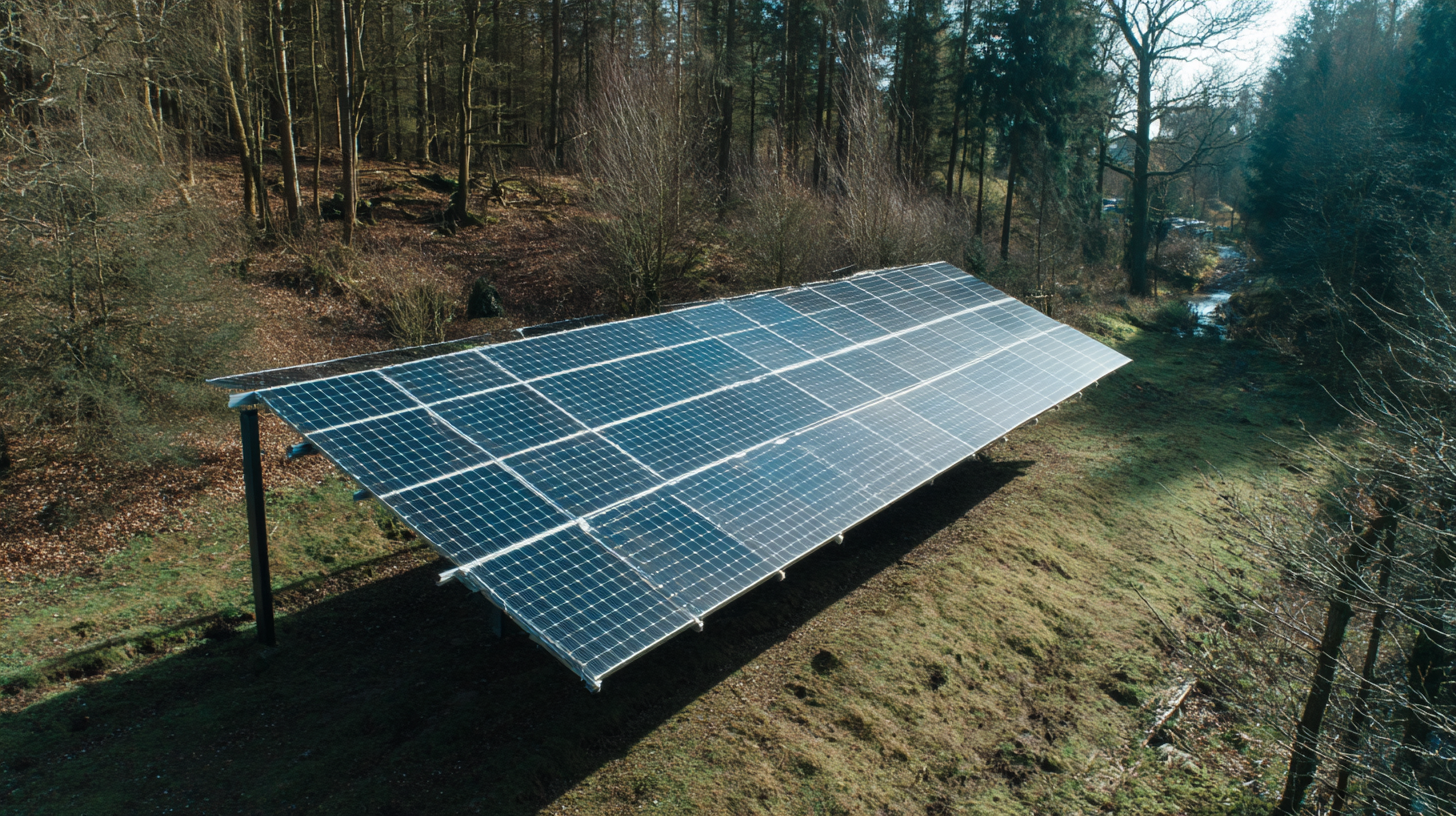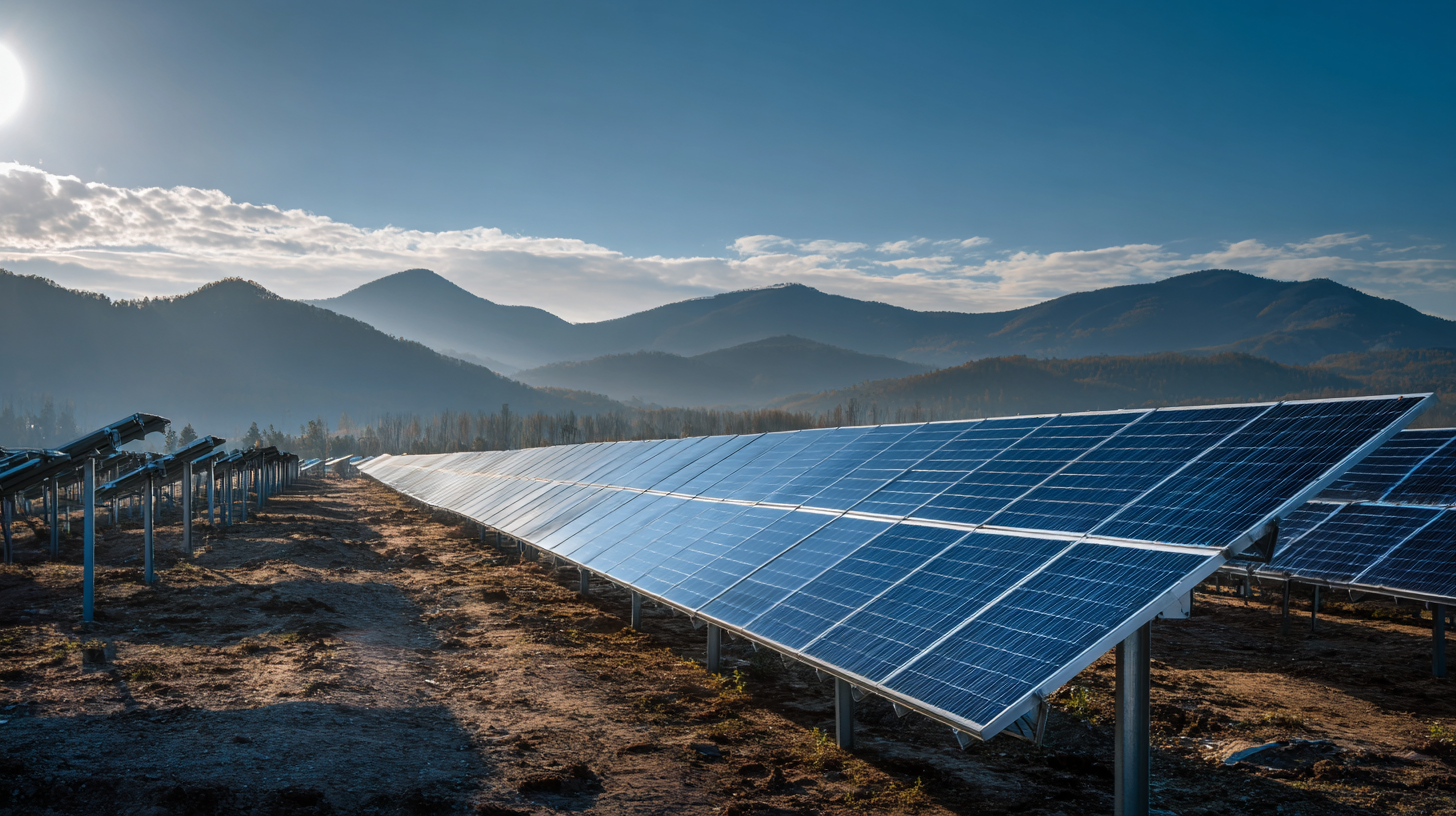ALL PRODUCTS
- Solar Panel
- Hybrid Inverter
- Lithium Battery
GSB SOLAR LITHIUM BATTERIES
- Gel Battery
- Solar Street Lights
- Pump Inverter
In recent years, solar panels have emerged as a pivotal technology in the fight against climate change and the quest for sustainable energy solutions. However, many people remain unaware of the surprising facts surrounding these innovative devices. Often perceived merely as a means to harness sunlight, solar panels actually encompass a diverse range of features, benefits, and advancements that are reshaping our energy landscape.
 From their remarkable efficiency levels to the developments in solar technology, understanding the various aspects of solar panels can empower consumers and decision-makers alike. In this exploration, we’ll uncover six surprising facts about solar panels that highlight their importance and potential beyond conventional perceptions, revealing how they can significantly contribute to a greener future.
From their remarkable efficiency levels to the developments in solar technology, understanding the various aspects of solar panels can empower consumers and decision-makers alike. In this exploration, we’ll uncover six surprising facts about solar panels that highlight their importance and potential beyond conventional perceptions, revealing how they can significantly contribute to a greener future.
The efficiency of modern solar panels has seen remarkable advancements over the past decade, leading to surprisingly high performance metrics that can benefit homeowners and businesses alike. According to the National Renewable Energy Laboratory (NREL), the average efficiency of solar panels has increased from around 15% in the early 2000s to approximately 22% in 2021, with some cutting-edge models achieving efficiencies of over 23%. This evolution not only reflects technological enhancements but also translates into greater energy output from a smaller installation footprint, providing a compelling case for solar adoption.
Moreover, the durability and longevity of these solar panels have greatly improved, with many manufacturers now offering warranties of 25 years or more. Recent studies by the U.S. Department of Energy indicated that modern panels can maintain up to 90% of their efficiency even after 25 years of use. This is a significant shift from earlier models, which typically witnessed a more rapid decline in performance. The combination of higher efficiency rates and long-term reliability underscores the role of modern solar technology in the global transition toward sustainable energy sources, debunking the myth that solar power is an unreliable or short-lived investment.
When considering solar panel installation, one of the most compelling factors is the significant long-term savings homeowners can enjoy. According to a report by the U.S. Department of Energy, solar energy users can save an average of $20,000 to $30,000 over a 25-year period, depending on location and energy consumption. This substantial saving occurs as homeowners reduce their reliance on traditional energy sources, which often lead to escalating electricity costs.

A study by the National Renewable Energy Laboratory further highlights that, on average, solar panels increase a home's value by approximately 4%. This is particularly advantageous in regions where electricity rates are high. In states like California and New York, where energy bills can be steep, homeowners find that the investment in solar technology often pays for itself within just a few years of installation.
With rising interest in renewable energy, understanding the financial implications over a quarter century is crucial for informed decision-making regarding solar investments.
When considering solar panels for your home or business, one of the most common concerns is their lifespan and durability. Contrary to popular belief, modern solar panels are designed to last significantly longer than the traditional 20-25 year lifespan often cited in the industry. According to a report by the National Renewable Energy Laboratory (NREL), many solar panels continue to operate efficiently for 30 years or more, with some manufacturers offering warranties that extend to 25 years or longer, covering power output and defects.
Maintenance requirements for solar panels are often exaggerated. Most systems require minimal upkeep, typically limited to occasional cleaning and inspections, which can be performed by the homeowner or a professional service. A study from the Solar Energy Industries Association (SEIA) indicates that properly installed and maintained solar panels can retain up to 90% of their original efficiency after 25 years. This exceptional durability not only debunks myths surrounding frequent repairs but also emphasizes the long-term value and reliability of solar energy systems in today’s market.
| Fact | Description | Lifespan | Maintenance Frequency |
|---|---|---|---|
| Durability | Solar panels are designed to withstand extreme weather conditions. | 25-30 years | Annually |
| Energy Production | Solar panels can still produce energy on cloudy days. | 25-30 years | Annually |
| Recycling | Solar panels can be recycled at the end of their life. | 25-30 years | Every 5 years |
| Weight | Most solar panels weigh between 40-50 pounds. | 25-30 years | Every 6 months |
| Installation | Proper installation is crucial for maximizing efficiency. | 25-30 years | Annually |
| Savings | Solar panels can significantly reduce electricity bills. | 25-30 years | Every 2 years |
As the adoption of
solar panels continues to rise, so does the concern for their environmental impact, particularly in terms of sustainability and waste management. The life cycle of a solar panel, which averages 25 to 30 years, raises questions about what happens to them once they reach the end of their operational life. The good news is that the solar industry is increasingly taking responsibility for recycling these panels. Initiatives are being launched to recover valuable materials like silicon, silver, and copper from old panels, minimizing the risk of hazardous waste entering landfills.
Several companies are now focusing on developing effective recycling processes that can extract and repurpose these materials. Innovations in technology are allowing for more efficient dismantling of solar panels, ensuring that both the environmental impact is reduced and valuable resources are conserved. In addition, laws and regulations are gradually being put in place to require manufacturers to contribute to recycling efforts. This proactive approach reflects an overarching commitment to sustainability in the renewable energy sector, paving the way for a greener future while addressing the environmental concerns related to solar panel disposal.
 Government incentives for solar energy are transforming the renewable energy landscape, offering unexpected financial benefits for homeowners. Programs across various regions provide substantial savings through tax credits, rebates, and grants that significantly reduce the initial costs of solar panel installation. For instance, the federal solar investment tax credit (ITC) remains one of the most impactful incentives, allowing homeowners in many states, including Missouri, to deduct 30% of the cost of their solar system from their federal taxes. This can lead to savings in the thousands, making solar a financially attractive option.
Government incentives for solar energy are transforming the renewable energy landscape, offering unexpected financial benefits for homeowners. Programs across various regions provide substantial savings through tax credits, rebates, and grants that significantly reduce the initial costs of solar panel installation. For instance, the federal solar investment tax credit (ITC) remains one of the most impactful incentives, allowing homeowners in many states, including Missouri, to deduct 30% of the cost of their solar system from their federal taxes. This can lead to savings in the thousands, making solar a financially attractive option.
Moreover, new initiatives, such as the recent rollout of energy efficiency programs in Ontario, highlight the increasing support from governments aimed at encouraging residential solar adoption. Homeowners can take advantage of programs like the Home Renovation Savings Program, which not only incentivizes solar energy installations but also integrates energy efficiency improvements. Additionally, as governments push for clean energy targets, many programs are designed to provide grants and low-interest loans, further reducing financial barriers for homeowners considering solar. As interest in solar technology surges, particularly as certain incentives risk expiration, homeowners are eager to capitalize on these financial opportunities.






